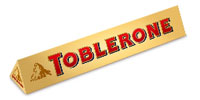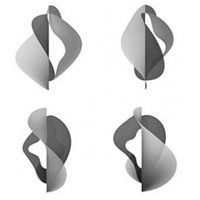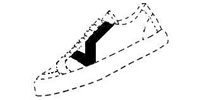For IP professionals
This is the portal for professionals working in the field of intellectual property. Here you'll find direct access to all necessary resources.
Quick links
Choose a type of trade mark
Any sign that is capable of being represented graphically can be registered as a trade mark, provided that it distinguishes the goods and services of a company from those of its competitors. As well as words, images (logos) or a combination of words and images, you can also register special types of trade marks such as three-dimensional signs or short melodies.
The following is a summary of the various types of trade mark:
Most common types of trade mark
Word marks
Word marks are trade marks that consist exclusively of printable characters, such as letters, numbers or special characters, and for which no colour is claimed. For example, the following can be protected as word marks:
- Words (e.g. Breitling)
- Slogans (e.g. “Red Bull gives you wings”)
- Letter combinations (e.g. ABB)
- Number combinations (e.g. 501)
Figurative marks
Figurative marks consist only of visual elements without any word components. They may have a colour claim.
Example: Mammut
![[Translate to English:] Logo Mammut [Translate to English:] Logo Mammut](/fileadmin/user_upload/schuetzen/marken/img/mamut.png)
Combined word/figurative marks
Combined word/figurative marks consist of words and images or graphically designed lettering. They may have a colour claim.
Example: Ricola
![[Translate to English:] Logo Ricola [Translate to English:] Logo Ricola](/fileadmin/user_upload/schuetzen/marken/img/ricola.png)
Colour claim – protecting figurative marks and combined word/figurative marks in a specific colour
Figurative marks and combined word/figurative marks can be entered in the register with a colour claim (e.g. red, yellow or blue).
If a trade mark is registered with a colour claim, it is only protected in this colour. A trade mark without a colour claim is, however, protected in all colours.
Less common types of trade mark
Three-dimensional marks
A three-dimensional mark is a three-dimensional sign that is, for example, affixed to a product (e.g. the Mercedes star on a car). It is also possible to protect a product itself or its packaging as a three-dimensional trade mark, as long as the shape is distinctive in its design. However, in general, shapes are only registered as trade marks in exceptional cases. Today, shapes are primarily protected as designs.
Example: Toblerone

Acoustic marks
Position marks
Colour marks
A colour mark consists exclusively of a colour or a colour combination.
It is therefore the colour itself that is protected as a trade mark. The colour must be given in an internationally recognised colour standard (e.g. Pantone, RAL or NCS).
Colours belong to the public domain, and so generally cannot be protected as a trade mark. Exceptions to this are colours that have come to be accepted as being distinctive and have acquired the character of a trade mark through everyday use (known as trade marks with acquired distinctiveness).
Example: the yellow of Swiss Post Ltd (RAL 1004, Pantone 116 C/109 U)

Motion marks
A motion mark consists of words or figurative elements that move.
When the trade mark is filed, the individual stages of the movement are represented graphically and the chronology of the images is described precisely.
Example: the Swisscom Ltd motion trade mark
“The object depicted rotates continuously in an anti-clockwise direction around a central, vertical axis. After seven seconds, the movement comes to a close.”
(Translated from the published description of the motion sequence)



